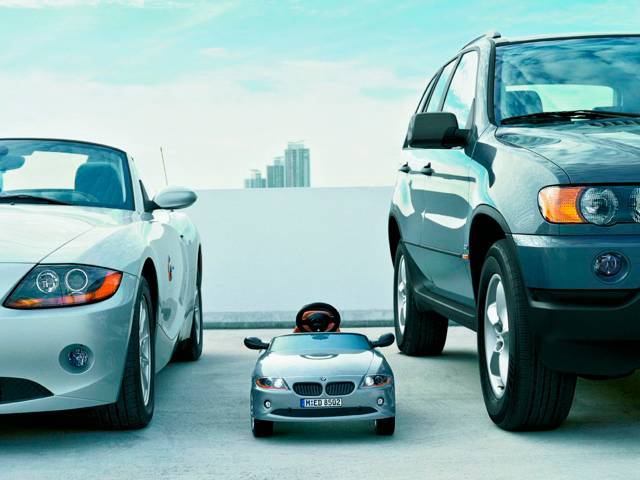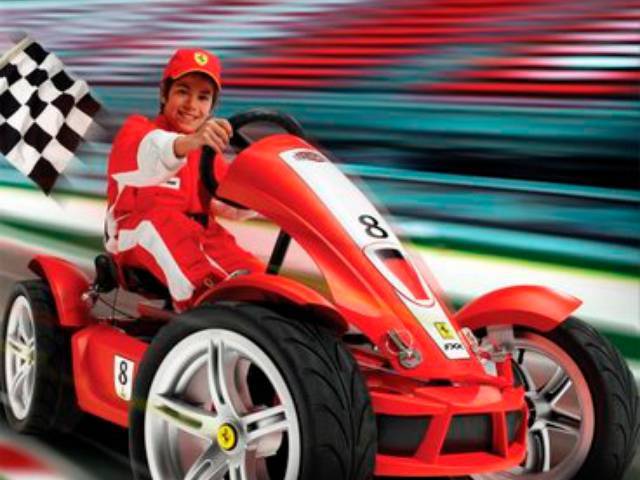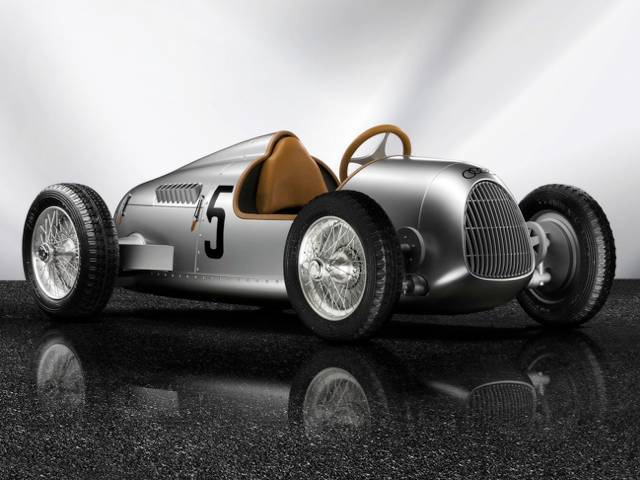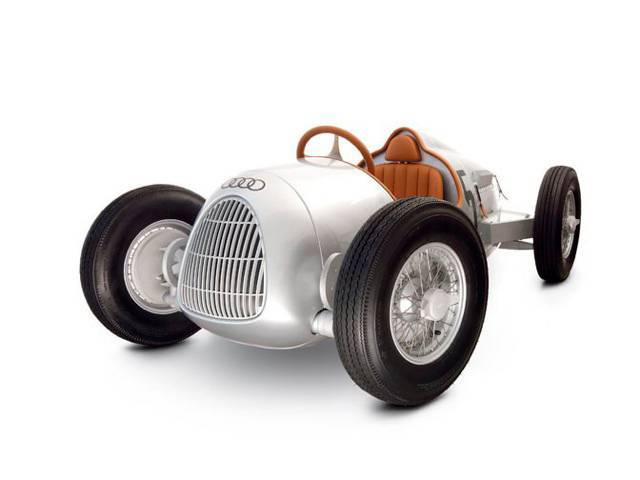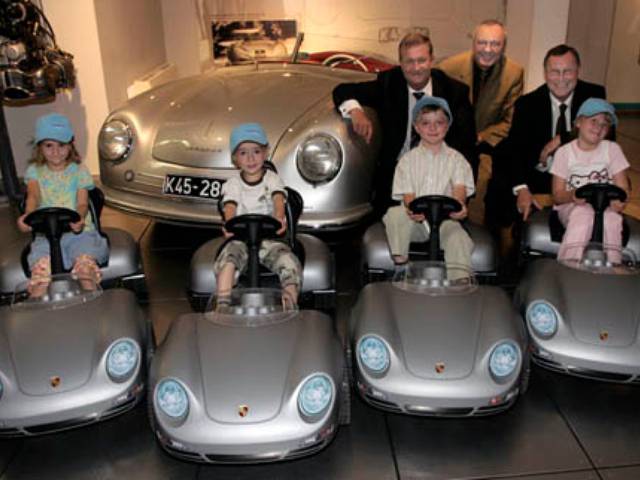The pedal car has been a beloved accessory of childhood for as long as the real thing has been an object of desire. Yet far from being shunned by an increasingly car-sceptic world or driven onto the hard shoulder of consumerism by high-tech toys and computer games, pedal cars are now more popular than ever, with major motor manufacturers producing models based on their full-size products.
The Alfa, Mercedes, Porsche Cayenne, Renault and Volvo have identical mirrors and the same, archaic, push-push stirrup-pedal drive mechanism connected by solid rods to an acentric rear axle; looks aside, only detailing individualises these five clones. The Renault sports a flame paint job and the largest seat-to-pedal adjustment.
The Merc also has seat adjustment, plus a handbrake. The Alfa and Volvo lack seat adjustment and the Porsche Cayenne has no seat, but compensates with an ignition key, wipers and a horn.
In contrast, the BMW, Audi TT and Porsche 911 all sport proper pedals and chain drive to the rear axle. The BMW's bodywork is complete, but the 911 and Audi have something of the giant plastic dinosaur bone about them, with mid-sections slimmed to transmission tunnel width. The 911's ace accessory is a handbrake, the BMW has an electric horn and the Audi boasts turning instrument dials, an ignition key and a horn that sounds like a cuddly toy being run over by a Routemaster bus.

